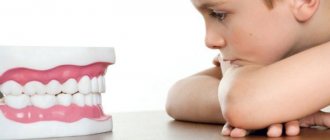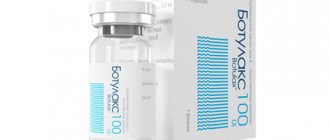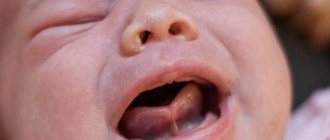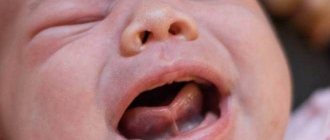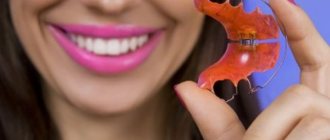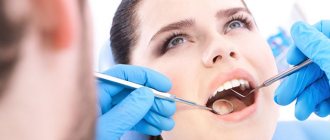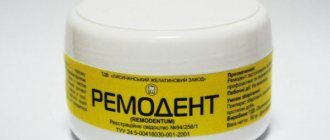7962
Orthodontic treatment does not always involve the use of special devices. In some situations, it is enough to use myogymnastics.
This option is an effective remedy for correcting abnormal bites , which has been proven by studies conducted over 50 years.
Exercises to normalize breathing function
Exercise No. 1 Full breathing. Take a long breath through your nose. During inhalation, the abdomen “inflates”, then the chest expands. When you exhale (through the nose), on the contrary, the volume of the chest first decreases, then the stomach retracts.
Exercise No. 2 Chest breathing. Exhale. Take a long breath through your nose. At this time, the chest expands and the stomach retracts. When you exhale (through the nose), the stomach retracts.
Exercise No. 3 Abdominal breathing. Exhale. Take a long breath through your nose. At this time, the stomach protrudes. When you exhale (through the nose), the stomach retracts.
Exercise No. 4 The skill of full, extended exhalation. Walk at an average pace. Inhale and exhale only through the nose. Inhale for three steps, exhale for four steps. After three to four days, the duration of exhalation should be increased by one count (5,6, etc.)
Exercise No. 5 Inhale and exhale alternately through one nostril (press the second nostril tightly with your finger).
Exercises to train the muscles of the tongue and normalize the type of swallowing
Exercise No. 1 “Clock”. The mouth is open, the tongue makes slow circular movements along the upper lip, then along the lower lip.
Exercise No. 2 “Punish the naughty tongue.” Place your tongue on your lower lip and slap it with your upper lip “na-na.”
Exercise No. 3 “We will paint the ceiling.” It's time to paint the rooms, they invited a molar, he comes to the old house with a new brush and bucket. Your tongues are a brush, your hard palate is the ceiling...
Exercise No. 4 Depict the operation of a jackhammer. DDDD...
Exercise No. 5 “Riders”. Sit astride a chair and, opening your mouth wide, click your tongue.
Exercise Tips
Remember that for a good result from using myogymnastics you need to be consistent, systematic and active. A conscious approach to business, faith in the result and perseverance in achieving the goal are required.
Tips for doing the exercises:
- actively load the muscles;
- carry out movements with maximum amplitude;
- gradually increase the speed of execution and the number of repetitions;
- muscle rest after exercise is equal in time to their activity;
- All exercises are performed until you feel tired; it is not recommended to overload the muscles;
- It is advisable to perform exercises at the same time of day.
Myocorrection has the greatest effect before the change of baby teeth, when the jaw is not yet formed. Gymnastics is also carried out when replacing baby teeth with molars - from nine to twelve years. But in the second case, longer treatment is required.
Exercises to normalize breathing function
Exercise No. 1 Full breathing. Take a long breath through your nose. During inhalation, the abdomen “inflates”, then the chest expands. When you exhale (through the nose), on the contrary, the volume of the chest first decreases, then the stomach retracts.
Exercise No. 2 Chest breathing. Exhale. Take a long breath through your nose. At this time, the chest expands and the stomach retracts. When you exhale (through the nose), the stomach retracts.
Exercise No. 3 Abdominal breathing. Exhale. Take a long breath through your nose. At this time, the stomach protrudes. When you exhale (through the nose), the stomach retracts.
Exercise No. 4 The skill of full, extended exhalation. Walk at an average pace. Inhale and exhale only through the nose. Inhale for three steps, exhale for four steps. After three to four days, the duration of exhalation should be increased by one count (5,6, etc.)
Exercise No. 5 Inhale and exhale alternately through one nostril (press the second nostril tightly with your finger).
Exercise No. 6 Exhale. Pinch your nose with your fingers. Slowly count out loud to 5, then take a deep breath and exhale through your nose.
Exercises to strengthen the pharyngeal muscles
Exercise No. 1 Alternately tilt your head back as much as possible, leaning forward.
Exercise No. 2 Throw your head back. In this position, alternately tilt your head towards the right and left shoulder.
Exercise No. 3 Throw your head back, in this position alternately turn your head, without releasing your chin, to the right, then to the left.
Where should you start training?
It will be very useful to start the lesson with a warm-up
A warm-up will be considered useful when the muscles on the face are warmed up. To do this, you need to clearly pronounce all the vowels , opening your mouth wide.
This is such a simple and quick warm-up. Next you should move on to the exercises.
One of the most effective exercises is Proboscis
You will need to sit down, but you can also stand up. The back should be straight throughout the entire time when performing exercises.
- The lips need to be tensed and pulled out with a “proboscis”. For this workout you will need your fingers: you should touch your index fingers to the upper lip, and your thumbs to the lower lip.
- What should you do next? Press with your fingers into the area around the mouth.
To begin with, you should perform this exercise ten times, then pause for ten seconds and do ten repetitions again. Gradually you need to increase the number of presses, and in the end bring it up to twenty times in each approach.
It is important not to release the tension in the jaws; they must maintain their ring shape. If suddenly your lips lose this shape and close together, you need to immediately concentrate and restore their shape. In this case, the fingers must perform clear movements.
This is not the only exercise that will help you get away from the problem.
Video: Massage techniques for the orbicularis labii muscle against wrinkles
Exercises to normalize the function of lip closure
Exercise No. 1 Pull your lips forward, close them, draw a tube, and stretch them wide.
Exercise No. 2 Pull your lips forward, close them, depict a mouthpiece, a proboscis.
Exercise No. 3 Close your lips, puff out your cheeks, slowly squeeze the air through your clenched lips with your fists.
Exercise No. 4 Close your lips, then move them alternately to the right and left.
Exercise No. 5 Close your lips, blow air under your upper lip, then under your lower lip.
Exercise No. 6 Place bent little fingers in the corners of the mouth, do not close your lips, spread your fingers slightly to the sides, close your lips.
Exercise No. 7 Blow out a stream of air with force (“a breeze is blowing,” let’s put out the candle,” “let’s make a storm,” etc.).
Myogymnastics to correct the bite
“Gymnastics is the healing part of medicine.”
Plato
In children, malocclusion is often accompanied by functional disorders of the muscles of the maxillofacial area. For quality chewing, swallowing, breathing and speech, the muscles of the face and oral cavity must be in balance. For example, mouth breathing forces the child to constantly keep his mouth open. This leads to overstrain of the chewing muscles and to narrowing of the jaws and malocclusion. Or, with increased activity of facial muscles, swallowing is impaired. As a result, the child has a gap between the upper and lower front teeth, and hence speech impairment. These are just a few examples showing how everything is interconnected in our body.
To work with muscles, in addition to orthodontic devices, doctors resort to myogymnastics, the therapeutic principle of which is to train the facial muscles to promote their proper functioning. Disorders in the maxillofacial area affect the muscles of the neck and back, which ultimately leads to poor posture and flat feet in the child. Speech therapists and osteopaths often come to the aid of the orthodontist. This comprehensive approach allows you to cope with the problem and restore the muscular balance of the maxillofacial area and the entire musculoskeletal system as a whole.
Let's look at a few exercises that are prescribed for the most common bite problems.
- Open mouth
Strengthening the orbicularis oris muscle.
The exercise is prescribed when the child’s mouth is constantly open, when breathing through the mouth, when the lips are not closed, or when the upper front teeth protrude from under the lip. Button
.
Place a large flat plastic button horizontally between your lips and hold it first for 1 minute, then up to 3-5 minutes. Ruler
.
Press the edge of a ruler 8–10 cm long with your lips and hold it in a horizontal position. Then put some weight, gradually increasing it. Air
.
Close your lips, blow air under your upper lip, then under your lower lip. Cheeks
. Close your lips, puff out your cheeks, and slowly squeeze the air through your clenched lips with your fists. - Distal bite
We move the lower jaw forward with a distal bite, i.e.
when the lower jaw and chin are moved back and there is a gap between the upper and lower jaw. Pull out and hold
.
Slowly move the lower jaw forward until the cutting edges of the lower incisors are positioned in front of the upper ones. Hold the lower jaw in this position for 10 seconds, then slowly return to its original position, gradually increasing the time to 60 seconds. Head turns
.
Perform the previous exercise by turning your head first to the right, then to the left. The load increases when performing the exercise while standing. The head is slightly tilted back, the lower jaw is slowly pushed forward until the lower incisors are positioned in front of the upper ones. Ruler
. Press the edge of a 6–12 cm ruler with your lips and hold it in a horizontal position. Place some weight, gradually increasing it. - Open bite
An open bite in which the upper and lower front teeth do not meet.
Pressure
.
Lips are closed, teeth are clenched. Increase pressure on the teeth by contracting the masticatory muscles./ Resistance
.
Open your mouth, place your index and middle fingers on the teeth and lateral areas of the lower jaw. Close your mouth, resisting the pressure of your hands. Wooden stick
. Place a rubber tube on a wooden stick, place it between the side teeth and hold it in this position. Clench and unclench your teeth, gradually moving the stick along the dentition. - Mandibular displacement
When the lower jaw is displaced to the side and there is visible asymmetry of the child’s face.
Hold
. Open your mouth as much as possible, move the lower jaw to the correct position, close your teeth and hold the lower jaw in this position for 5 seconds, then 10 seconds, 20 seconds, and so on until 60. - Deep bite
With a deep bite, when the lower incisors are almost invisible.
Hold
.
Slowly push the lower jaw forward until the cutting edges of the lower incisors are positioned in front of the upper ones, hold the lower jaw in this position for 10 seconds, then slowly return to its original position. Wooden stick
. A rubber tube is placed on a wooden stick, placed between the front teeth, and the teeth are compressed and unclenched. - Prominent lower jaw
When a child's lower jaw protrudes forward.
Pressure
.
Use the tip of your tongue to press on the inner surface of the upper front teeth until the muscles become tired (3–5 minutes). Hold
.
Pinch your lower lip with your upper front teeth, hold it, then release it. Tooth to tooth
. Open your mouth, slowly close it, moving the lower jaw back and placing the front teeth in marginal closure. Hold the lower jaw in this position for 4–8 seconds.
Photo source: shutterstock.com
Photo source: shutterstock.com
To achieve the desired result, all exercises should be performed regularly 2 times a day, 10–15 times. Without consulting an orthodontist, you should not start doing exercises on your own, so as not to make mistakes and not be disappointed in wasted time.
Myogymnastics is a good way, through the joint efforts of an orthodontist, a child and his parents, to cope with malocclusion and restore proper breathing and speech. Daily exercise, especially if done in a playful way, gives parents a chance to spend even more time with their child, bringing both of them closer together. And the child, seeing the result in a couple of months, will understand that his efforts were not in vain, and you will celebrate his big victory together.
Exercises to train the muscles of the tongue and normalize the type of swallowing
Exercise No. 1 “Clock”. The mouth is open, the tongue makes slow circular movements along the upper lip, then along the lower lip.
Exercise No. 2 “Punish the naughty tongue.” Place your tongue on your lower lip and slap it with your upper lip “na-na.”
Exercise No. 3 “We will paint the ceiling.” It's time to paint the rooms, they invited a molar, he comes to the old house with a new brush and bucket. Your tongues are a brush, your hard palate is the ceiling...
Exercise No. 4 Depict the operation of a jackhammer. DDDD...
Exercise No. 5 “Riders”. Sit astride the toilet seat and, opening your mouth wide, click your tongue.
Exercise No. 6 Lift the tongue up, press it to the front part of the hard palate in the area of the palatine folds. Clench your teeth, swallow saliva, fixing the position of your tongue.
Exercise No. 7 Raise the tip of the tongue up and place it at the anterior part of the hard palate. Move the tongue along the arch of the hard palate as far back as possible to the soft palate.
Exercise No. 8 Raise the tip of the tongue up and place it at the anterior part of the hard palate. Move your tongue along the palatal surface of the teeth on the right and left, touching each tooth.
Where is the orbicularis oris muscle located and what does it affect?
What muscle is called the circular muscle? The one that is the basis of the motor apparatus of the lips.
The muscle fits very tightly to the skin, so this area often raises questions and problems during surgery and plastic surgery, since it cannot be straightened or cut out.
If the skin in this area is severely depleted and wrinkled, cosmetologists and doctors suggest performing procedures such as cleansing, peeling and facial resurfacing to restore it.
To more consciously understand the meaning of this muscle, you need to understand its structure
It has the shape of a flat plate, in which there are two layers: deep and superficial.
The muscles of the deep layer go radially towards the center. In this case, the surface layer consists of two bundles, which have the shape of an arc and run along the upper and lower parts of the mouth. It is this muscle that has the ability to fade as a person ages, and because of this, the lips become like two thin tubes.
Orbicularis oris muscle
Most of the folds in the area of this muscle are formed at a very early age. It's hard to believe, but there are explanations for everything.
Most girls are sure that the aging of cells, and skin in general, begins at the age of twenty-five, but this process has nothing to do with the formation of folds.
For example, nasolabial folds near the nose begin to form already in childhood. At the same age, folds are formed in the area of the orbicularis oris muscle - one might say that from birth.
Except that after 30 a person doesn’t have to grimace to see them.
Video: Exercise to strengthen the orbicularis oris muscle
Exercises to normalize breathing function
Exercise No. 1 Full breathing. Take a long breath through your nose. During inhalation, the abdomen “inflates”, then the chest expands. When you exhale (through the nose), on the contrary, the volume of the chest first decreases, then the stomach retracts.
Exercise No. 2 Chest breathing. Exhale. Take a long breath through your nose. At this time, the chest expands and the stomach retracts. When you exhale (through the nose), the stomach retracts.
Exercise No. 3 Abdominal breathing. Exhale. Take a long breath through your nose. At this time, the stomach protrudes. When you exhale (through the nose), the stomach retracts.
Exercise No. 4 The skill of full, extended exhalation. Walk at an average pace. Inhale and exhale only through the nose. Inhale for three steps, exhale for four steps. After three to four days, the duration of exhalation should be increased by one count (5,6, etc.)
Exercise No. 5 Inhale and exhale alternately through one nostril (press the second nostril tightly with your finger).
Additional special exercises
Exercise No. 1. Slowly push the lower jaw forward until the cutting edges of the lower incisors are positioned in front of the upper ones. Hold the lower jaw in this position for 10 seconds, then slowly return to its original position.
Exercise No. 2. Perform the same exercise with a spank of the head, first to the right, then to the left. The load increases when performing the exercise while standing. The head is slightly tilted back, the lower jaw is slowly pushed forward until the lower incisors are positioned in front of the upper ones.
Exercise No. 3 (with the vestibular plate). The vestibular plate is placed in the vestibule of the oral cavity, with 1 finger of the right hand it is pulled forward by the ring and held with pursed lips.
Exercise No. 4. Place a folded strip of paper between your lips and purse your lips. The paper is held for up to 30-50 minutes during quiet games, drawing, reading, or when the child is watching TV.
Exercise No. 5. Perform the previous exercise, replace the strip of paper with a metal disk with a diameter of 2.5-3 cm, a thickness of 1.5 mm and a mass of about 6.5 g. The disk clamped between the lips should be positioned horizontally, it is necessary to ensure that the disk is only clamped lips, not teeth. The exercise is performed until fatigue (from 30 seconds to several minutes).
Exercise No. 6 (with a plastic plate). The child presses the edge of the plate, 1-2 mm thick and 30-35 mm wide, with his lips. 60-120 mm long. and holds it in a horizontal position. Some kind of weight is placed on the plate. Increasing the load causes increased clenching of the lips.
Exercise No. 7. Small cotton rolls are placed in the area of the transitional fold of the vestibule of the oral cavity on both sides of the frenulum of the upper lip. Close your lips and pronounce a series of phrases containing labial sounds (“b”, “m”, “p”).
The benefits of regular exercise for the orbicularis oris muscle
In order for the muscle to always be in good shape, you should start doing exercises at as early an age as possible. They will come to the rescue not only to achieve a visual result, but also to solve internal problems - such as malocclusion. The exercises will also serve to correct proper breathing and prevent orthodontic problems.
For example, a common problem in children is lip failure, so a mandatory procedure for this problem will be gymnastic exercises for the orbicularis muscle. They require special attention, since it is quite difficult to wean a child from mouth breathing. It is also useful to exercise for interlabial gaping.
This muscle belongs to the psychosomatic zones of the human body . It often happens that when this muscle spasms, other muscles of the digestive system also spasm. Therefore, when this muscle is restored, rehabilitation of the intestines will begin.
Are there any contraindications?
Absolutely anyone can do such exercises, but the main thing is to monitor the technique and accuracy of their implementation so that all efforts are not wasted.
To perform this you do not need to use any creams or ointments. The training takes place on dry, clean skin.
Video: Orbicularis oris muscle
Exercises to normalize breathing function
Exercise No. 1 Full breathing. Take a long breath through your nose. During inhalation, the abdomen “inflates”, then the chest expands. When you exhale (through the nose), on the contrary, the volume of the chest first decreases, then the stomach retracts.
Exercise No. 2 Chest breathing. Exhale. Take a long breath through your nose. At this time, the chest expands and the stomach retracts. When you exhale (through the nose), the stomach retracts.
Exercise No. 3 Abdominal breathing. Exhale. Take a long breath through your nose. At this time, the stomach protrudes. When you exhale (through the nose), the stomach retracts.
Exercise No. 4 The skill of full, extended exhalation. Walk at an average pace. Inhale and exhale only through the nose. Inhale for three steps, exhale for four steps. After three to four days, the duration of exhalation should be increased by one count (5,6, etc.)
Exercise No. 5 inhale and exhale alternately through one nostril (press the second nostril tightly with your finger).
Exercises to train the muscles of the tongue and normalize the type of swallowing
Exercise No. 1 “Clock”. The mouth is open, the tongue makes slow circular movements along the upper lip, then along the lower lip.
Exercise No. 2 “Punish the naughty tongue.” Place your tongue on your lower lip and slap it with your upper lip “na-na.”
Exercise No. 3 “We will paint the ceiling.” It's time to paint the rooms, they invited a molar, he comes to the old house with a new brush and bucket. Your tongues are a brush, your hard palate is the ceiling...
Exercise No. 4 Depict the operation of a jackhammer. DDDD...
Exercise No. 5 “Riders”. Sit astride a chair and, opening your mouth wide, click your tongue.
Additional special exercises
Exercise No. 1. Use the tip of your tongue to press on the palatal surfaces of the upper front teeth until the muscles are tired (3-5 minutes).
Exercise No. 2. With the head thrown back, alternately open and close the mouth; when closing the mouth, try to reach the back edge of the hard palate with the tip of the tongue.
Exercise No. 3. Pinch your lower lip with your upper front teeth, hold it, then release it.
Exercise No. 4. Open your mouth, slowly close it, sweeping the lower jaw back and placing the front teeth in marginal closure. Hold the lower jaw in this position for 4-8 seconds.
Exercise No. 5 (with a wooden spatula). A spatula is placed between the teeth (its width is equal to the width of the upper incisors).
Bite the spatula so as to apply pressure on the palatal surfaces of the upper teeth and promote their deflection in the vestibular direction, and the lower incisors in the lingual direction.
Indications for myogymnastics
The formation of a correct bite depends on the coordinated work of a group of muscles located around the dentition. Any disturbances in muscle function negatively affect the bite, the position of the jaw arch and teeth. With the help of myogymnastics, you can restore the functioning of the jaw muscles, straighten the bite, and correct the abnormal position of the teeth.
Gymnastics can be performed before orthodontic treatment, together with it, or after it to consolidate the result. The treatment method is determined by the orthodontist.
Myogymnastics can be prescribed as part of a complex treatment, or as an independent technique for correcting bite defects.
Myogymnastics has the following effect on the maxillofacial apparatus:
- activates bone tissue growth;
- helps strengthen muscles;
- forms a compensating mechanism;
- normalizes functionality;
- has a beneficial effect on tissue trophism.
As a result of gymnastic exercises, the jaw muscles are actively rebuilt, the jaw bones acquire an anatomically correct structure and shape.
When is it prescribed?
- malocclusion of varying severity;
- speech dysfunction;
- impaired tone of the facial muscles;
- incorrect placement of tooth crowns;
- preventive measures.
If a child has incorrect posture, then along with myogymnastics a set of physical exercises is prescribed to correct the position of the spinal column.
Myogymnastics is especially effective at the age of 4-7 years.
The earlier a child begins to perform gymnastic exercises, the greater the chance of correcting the pathology without medication and orthodontic intervention. After nine years, myogymnastics cannot be used as an independent technique for correcting malocclusions. However, it is recommended to perform it as an additional measure of influence on the dental system.
